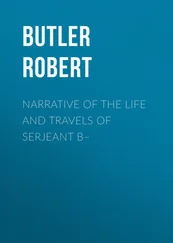John Tanner - A narrative of the captivity and adventures of John Tanner
Здесь есть возможность читать онлайн «John Tanner - A narrative of the captivity and adventures of John Tanner» весь текст электронной книги совершенно бесплатно (целиком полную версию без сокращений). В некоторых случаях можно слушать аудио, скачать через торрент в формате fb2 и присутствует краткое содержание. Жанр: Путешествия и география, на английском языке. Описание произведения, (предисловие) а так же отзывы посетителей доступны на портале библиотеки ЛибКат.
- Название:A narrative of the captivity and adventures of John Tanner
- Автор:
- Жанр:
- Год:неизвестен
- ISBN:нет данных
- Рейтинг книги:4 / 5. Голосов: 1
-
Избранное:Добавить в избранное
- Отзывы:
-
Ваша оценка:
- 80
- 1
- 2
- 3
- 4
- 5
A narrative of the captivity and adventures of John Tanner: краткое содержание, описание и аннотация
Предлагаем к чтению аннотацию, описание, краткое содержание или предисловие (зависит от того, что написал сам автор книги «A narrative of the captivity and adventures of John Tanner»). Если вы не нашли необходимую информацию о книге — напишите в комментариях, мы постараемся отыскать её.
A narrative of the captivity and adventures of John Tanner — читать онлайн бесплатно полную книгу (весь текст) целиком
Ниже представлен текст книги, разбитый по страницам. Система сохранения места последней прочитанной страницы, позволяет с удобством читать онлайн бесплатно книгу «A narrative of the captivity and adventures of John Tanner», без необходимости каждый раз заново искать на чём Вы остановились. Поставьте закладку, и сможете в любой момент перейти на страницу, на которой закончили чтение.
Интервал:
Закладка:
Suicide is not very unfrequent among the Indians, and is effected in various ways; shooting, hanging, drowning, poisoning, etc. The causes, also, which urge to desperate act, are various. Some years previous to the time I now speak of, I was with Net-no-kwa, at Mackinac, when I knew a very promising and highly respected young man of the Ottawwaws who shot himself in the Indian burying grounds. He had, for the first time, drank to intoxication, and in the alienation of mind produced by the liquor had torn off his own clothes, and behaved with so much violence that his two sisters, to prevent him from injuring himself or others, tied his hands and feet, and laid him down in the lodge. Next morning, he awoke sober, and being untied, went to his sister’s lodge, which was near the burying ground, borrowed a gun, under pretense of going to shoot pigeons, and went into the burying ground and shot himself. It is probable that when he awoke and found himself tied, he thought he had done something very improper in his drunkenness, and to relieve himself from the pressure of shame and mortification, had ended his days by violence. Misfortunes and losses of various kinds, sometimes the death of friends, and possibly, in some instances, disappointment in affairs of love, may be considered the causes which produce suicide among the Indians.
I reproached Wa-me-gon-a-biew for his conduct towards me in unloading my gun, and taking away my ammunition, though it was probably done by the old woman. After I recovered my health more perfectly, I began to feel ashamed of this attempt, but my friends were so considerate as never to mention it to me. Though my health soon became good, I did not recover my hearing, and it was several months before I could hunt as well as I had been able to do previous to my sickness, but I was not among those who suffered most severely by this terrible complaint. Of the Indians who survived, some were permanently deaf, others injured in their intellects, and some, in the fury occasioned by the disease, dashed themselves against trees and rocks, breaking their arms or otherwise maiming themselves. Most of those who survived had copious discharges from the ears, or in the earlier stages had bled profusely from the nose. This disease was entirely new to the Indians, and they attempted to use few or no remedies for it.
On going to Mouse River trading-house, I heard that some white people from the United States had been there to purchase some articles for the use of their party, then living at the Mandan village. I regretted that I had missed the opportunity of seeing them but as I had received the impression that they were to remain permanently there, I thought I would take some opportunity to visit them. I have since been informed that these white men were some of the party of Governor Clark and Captain Lewis, then on their way to the Rocky Mountains and the Pacific Ocean.
Late in the fall, we went to Ke-nu-kau-ne-she-way-bo-ant, where game was then plenty, and where we determined to spend the winter. Here, for the first time, I joined deeply with Wa-me-gon-a-biew and other Indians, in gambling, a vice scarce less hurtful to them than drunkenness. One of the games we used was that of the moccasin, which is played by any number of persons, but usually in small parties. Four moccasins are used, and in one of them some small object, such as a little stick, or a small piece of cloth, is hid by one of the betting parties. The moccasins are laid down beside each other, and one of the adverse party is then to touch two of the moccasins with his finger, or a stick. If the one he first touches has the hidden thing in it, the player loses eight to the opposite party; if it is not in the second he touches, but in one of the two passed over, he loses two. If it is not in the one he touches first, and is in the last, he wins eight. The Crees play this game differently, putting the hand successively into all the moccasins, endeavouring to come last to that which contains the article; but if the hand is thrust first into the one containing it, he loses eight. They fix the value of articles staked by agreement. For instance, they sometimes call a beaver skin, or a blanket, ten; sometimes a horse is one hundred. With strangers, they are apt to play high. In such cases a horse is sometimes valued at ten.
But it is the game called Bug-ga-sauk, or Beg-ga-sah, that they play with the most intense interest, and the most hurtful consequences. The beg-ga-sah-nuk are small pieces of wood, bone, or sometimes of brass made by cutting up an old kettle. One side they stain or colour black, the other they aim to have bright. These may vary in number, but can never be fewer than nine. They are put together into a large wooden bowl, or tray, kept for the purpose. The two parties, sometimes twenty or thirty, sit down opposite each other, or in a circle. The play consists in striking the edge of the bowl in such a manner as to throw all the beg-ga-sah-nuk into the air, and on the manner in which they fall into the tray depends his gain or loss. If his stroke has been to a certain extent fortunate, the player strikes again, and again, as in the game of billiards, until he misses, when it passes to the next. The parties soon become much excited, and a frequent cause of quarrelling is that one often snatches the tray from his neighbour before the latter is satisfied that the throw has been against him. Old and sensible people among them are much opposed to this game, and it was never until this winter that Net-no-kwa suffered me to join in it. In the beginning, our party had some success, but we returned to it again and again, until we were stripped of every thing. When we had nothing more to lose, the band which had played against us removed and camped at a distance, and, as is usual, boasted much of their success. When I heard of this, I called together the men of our party, and proposed to them that by way of making an effort to regain our lost property, and put an end to their insolent boasting, we would go and shoot at a mark with them. We accordingly raised some property among our friends, and went in a body to visit them. Seeing that we had brought something, they consented to play with us. So we set down to Beg-ga-sah, and in the course of the evening re-took as much of our lost property as enabled us to offer, next morning, a very handsome bet on the result of a trial of shooting the mark. We staked every thing we could command. They were loath to engage us, but could not decently decline. We fixed a mark at the distance of one hundred yards, and I shot first, placing my ball nearly in the center. Not one of either party came near me; of course I won, and we thus regained the greater part of what we had lost during the winter.
Late in the spring, when we were nearly ready to leave Ke-nu-kau-ne-she-way-bo-ant, an old man, called O-zhusk-koo-koon, (the muskrat’s liver,) a chief of the Me-tai, came to my lodge, bringing a young woman, his grand-daughter, together with the girl’s parents. This was a handsome young girl, not more than fifteen years old, but Net-no-kwa did not think favourably of her. She said to me, “My son, these people will not cease to trouble you if you remain here, and as the girl is by no means fit to become your wife, I advise you to take your gun and go away. Make a hunting camp at some distance, and do not return till they have time to see that you are decidedly disinclined to the match.” I did so, and O-zhusk-koo-koon apparently relinquished the hope of marrying me to his grand-daughter.
Soon after I returned, I was standing by our lodge one evening, when I saw a good looking young woman walking about and smoking. She noticed me from time to time, and at last came up and asked me to smoke with her. I answered that I never smoked. “You do not wish to touch my pipe, for that reason you will not smoke with me.” I took her pipe and smoked a little, though I had not been in the habit of smoking before. She remained some time, and talked with me, and I began to be pleased with her. After this we saw each other often, and I became gradually attached to her.
Читать дальшеИнтервал:
Закладка:
Похожие книги на «A narrative of the captivity and adventures of John Tanner»
Представляем Вашему вниманию похожие книги на «A narrative of the captivity and adventures of John Tanner» списком для выбора. Мы отобрали схожую по названию и смыслу литературу в надежде предоставить читателям больше вариантов отыскать новые, интересные, ещё непрочитанные произведения.
Обсуждение, отзывы о книге «A narrative of the captivity and adventures of John Tanner» и просто собственные мнения читателей. Оставьте ваши комментарии, напишите, что Вы думаете о произведении, его смысле или главных героях. Укажите что конкретно понравилось, а что нет, и почему Вы так считаете.










